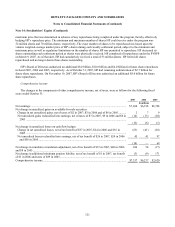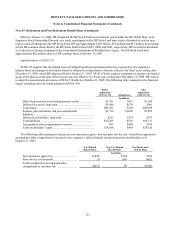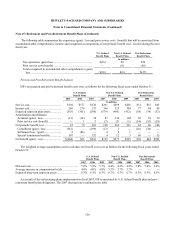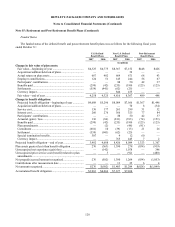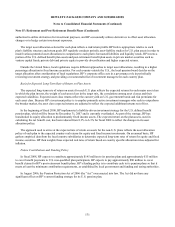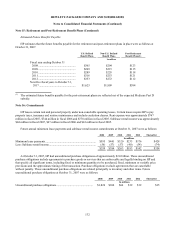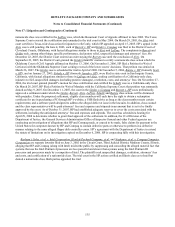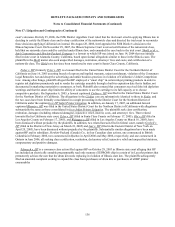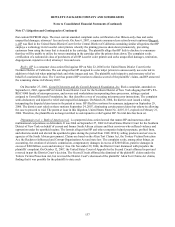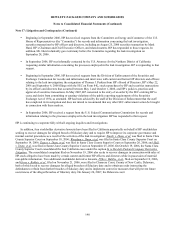HP 2007 Annual Report Download - page 145
Download and view the complete annual report
Please find page 145 of the 2007 HP annual report below. You can navigate through the pages in the report by either clicking on the pages listed below, or by using the keyword search tool below to find specific information within the annual report.HEWLETT-PACKARD COMPANY AND SUBSIDIARIES
Notes to Consolidated Financial Statements (Continued)
Note 15: Retirement and Post-Retirement Benefit Plans (Continued)
authorized to utilize derivatives for investment purposes, and HP occasionally utilizes derivatives to effect asset allocation
changes or to hedge certain investment exposures.
The target asset allocation selected for each plan reflects a risk/return profile HP feels is appropriate relative to each
plan’ s liability structure and return goals. HP regularly conducts periodic asset-liability studies for U.S. plan assets in order to
model various potential asset allocations in comparison to each plan’ s forecasted liabilities and liquidity needs. HP invests a
portion of the U.S. defined benefit plan assets and post-retirement benefit plan assets in private market securities such as
venture capital funds, private debt and private equity to provide diversification and higher expected returns.
Outside the United States, local regulations require different approaches to target asset allocations, resulting in a higher
percentage allocation in fixed income securities. For each country outside the U.S., the local pension board decides on the
target allocation after consideration of local regulations. HP’ s corporate office acts in a governance role in periodically
reviewing investment strategy and providing a recommended list of investment managers for each country plan.
Basis for Expected Long-Term Rate of Return on Plan Assets
The expected long-term rate of return on assets for each U.S. plan reflects the expected returns for each major asset class
in which the plan invests, the weight of each asset class in the target mix, the correlations among asset classes and their
expected volatilities. Expected asset class returns reflect the current yield on U.S. government bonds and risk premiums for
each asset class. Because HP’ s investment policy is to employ primarily active investment managers who seek to outperform
the broader market, the asset class expected returns are adjusted to reflect the expected additional returns net of fees.
In the beginning of fiscal 2008, HP implemented a liability-driven investment strategy for the U.S. defined benefit
pension plan, which will be frozen by December 31, 2007 and is currently overfunded. As part of the strategy, HP has
transitioned its equity allocation to predominantly fixed income assets. The expected return on the plan assets, used in
calculating the net benefit cost, has been reduced from 8.3% to 6.3% for fiscal 2008 to reflect the changes in its asset
allocation policy.
The approach used to arrive at the expected rate of return on assets for the non-U.S. plans reflects the asset allocation
policy of each plan to the expected country real returns for equity and fixed income investments. On an annual basis, HP
gathers empirical data from the local country subsidiaries to determine expected long-term rates of return for equity and fixed
income securities. HP then weights these expected real rates of return based on country specific allocation mixes adjusted for
inflation.
Future Contributions and Funding Policy
In fiscal 2008, HP expects to contribute approximately $145 million to its pension plans and approximately $15 million
to cover benefit payments to U.S. non-qualified plan participants. HP expects to pay approximately $80 million to cover
benefit claims for HP’ s post-retirement benefit plans. HP’ s funding policy is to contribute cash to its pension plans so that it
meets at least the minimum contribution requirements, as established by local government and funding and taxing authorities.
In August 2006, the Pension Protection Act of 2006 (the “Act”) was enacted into law. The Act did not have any
significant effect on HP’ s current funding strategy for its U.S. pension plan.
131


